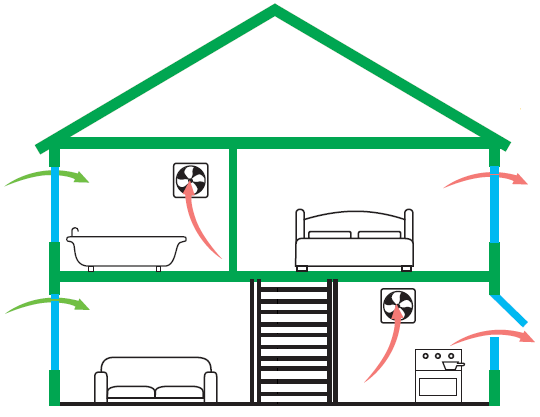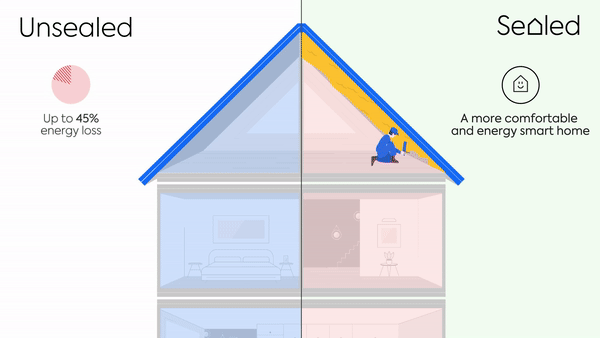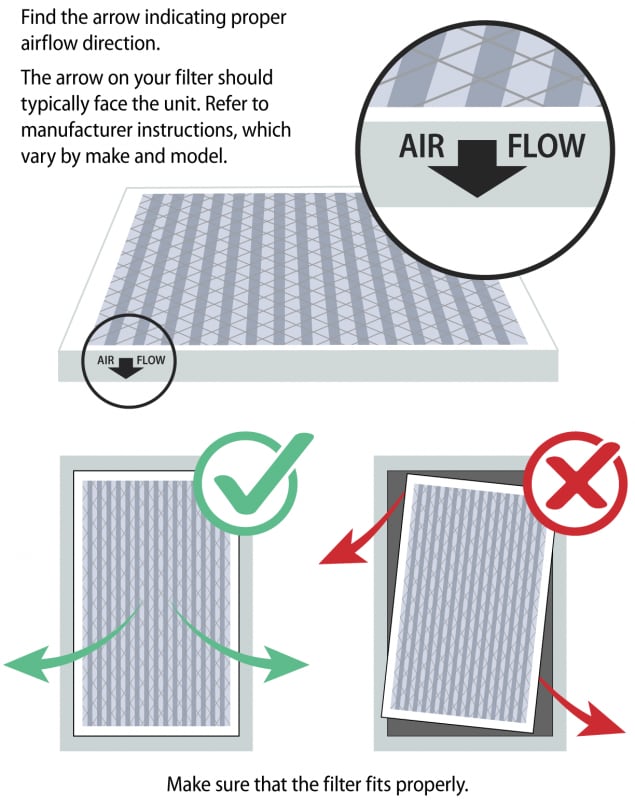Home Ventilation Melbourne Solutions That Support Sustainable Living
Wiki Article
Understanding the Relevance of Home Air Flow for a Healthier Living Setting
Home air flow plays an important role in maintaining a healthy and balanced living setting. It promotes the exchange of exterior and indoor air, which is crucial for enhancing air high quality. Without correct ventilation, homes can become reproducing premises for pollutants and allergens. The consequences of inadequate air flow can be substantial. This brings up the inquiry of exactly how home owners can properly implement ventilation approaches to protect their wellness and well-being. Recognizing these techniques is important.
The Basics of Home Ventilation
Home air flow acts as a crucial element of indoor air top quality and comfort. It includes the process of exchanging stagnant indoor air with fresh exterior air, thereby minimizing humidity and managing temperature. Proper ventilation systems can include all-natural methods, such as open windows and vents, as well as mechanical systems, such as exhaust fans and air exchangers. Reliable home air flow assists prevent problems like indoor mold growth and the build-up of hazardous particles. It additionally enhances total power effectiveness, as well-ventilated spaces can maintain comfortable temperatures with much less reliance on home heating and cooling down systems. Recognizing the basics of home air flow is vital for property owners seeking to develop a much healthier living environment for themselves and their families.
Typical Sources of Indoor Air Contamination

Several may not recognize it, indoor air contamination can stem from various sources within a house. Usual contributors include unstable organic substances (VOCs) discharged from paints, solvents, and cleaning products. Household devices, such as gas cooktops and fireplaces, can launch harmful gases like carbon monoxide and nitrogen dioxide. Additionally, mold and mildew and mold thrive in wet locations, launching spores that affect air top quality. Animal dander, allergen, and pollen can gather inside your home, additional intensifying contamination degrees. Cigarette smoking indoors creates hazardous chemicals that linger airborne. Developing products, including asbestos and formaldehyde, can off-gas harmful compounds. Acknowledging these sources is essential for preserving a much healthier indoor environment and advertising efficient ventilation strategies.
Wellness Consequences of Poor Ventilation
Indoor air contamination can have significant wellness implications, specifically when ventilation is poor. Poor ventilation can bring about the accumulation of damaging contaminants, such as unstable natural substances, mold and mildew, and particle issue. This build-up might lead to breathing issues, including bronchial asthma, allergies, and persistent obstructive pulmonary disease. Individuals might experience symptoms like migraines, exhaustion, and irritation of the eyes, nose, and throat. Susceptible populations, such as children and the senior, go to greater threat for serious health results. Long-term exposure to badly aerated settings can additionally add to a lot more severe conditions, including heart diseases. Consequently, making sure appropriate air flow is essential for maintaining a healthy and balanced living setting and reducing the risk of health difficulties connected with interior air contamination.Effective Air Flow Approaches for Your Home
Appropriate air flow is vital for preserving a healthy and balanced indoor atmosphere, and executing reliable strategies can significantly enhance air high quality. Homeowners Learn More can start by making certain that exhaust followers are mounted in bathrooms and cooking areas to eliminate excess dampness and smells. Opening windows frequently allows fresh air to circulate, particularly during moderate climate. Furthermore, utilizing air cleansers with HEPA filters can help catch airborne pollutants. For homes with home heating and cooling down systems, maintaining cooling and heating systems and changing filters routinely is crucial for peak performance. Integrating all-natural air flow methods, such as cross-ventilation, can additionally enhance air flow. Ultimately, securing any leakages in windows and doors avoids unwanted drafts, which can interfere with controlled airflow, eventually leading to boosted indoor air high quality and convenience.Maintaining Optimal Air Quality Year-Round
To keep ideal air quality year-round, home owners need to take on a positive technique to managing their interior atmosphere. Regularly keeping an eye on interior air top quality is essential; this consists of checking for pollutants such as website link dust, mold and mildew, and volatile organic substances (VOCs) Applying effective ventilation systems, such as exhaust followers and air cleansers, can greatly lower air-borne pollutants. Furthermore, routine upkeep of HVAC systems guarantees peak efficiency and air blood circulation. Homeowners need to additionally take into consideration moisture levels, as excessive wetness can cause mold growth. Seasonal adjustments may demand adjustments in air flow methods to accommodate differing outdoor air quality. By focusing on these techniques, property owners can create a much healthier home, advertising overall health for all passengers throughout the year.Often Asked Concerns
How Can I Inform if My Home Needs Much Better Ventilation?
To identify if a home calls for much better air flow, one ought to observe indicators such as relentless humidity, mold and mildew view publisher site growth, stuffy smells, condensation on windows, or boosted allergic reaction signs and symptoms, indicating poor air movement and potentially poor interior air high quality.What Are the Indicators of Poor Indoor Air Quality?

Can Houseplants Improve Indoor Air High Quality Efficiently?
The performance of houseplants in enhancing interior air high quality is debated. While some studies recommend they can absorb toxic substances and generate oxygen, their general influence may be marginal compared to correct air flow and air filtering systems.How Usually Should I Adjustment My Air Filters?
The frequency of air filter adjustments generally relies on use and filter type. Usually, it is recommended to change filters every 3 months, though households with allergies or pet dogs might require more constant changes for excellent performance.Are There Any Type Of Certain Air Flow Systems for Allergy Sufferers?
Lots of air flow systems, such as HEPA-filtered systems, efficiently lower allergens airborne. Home Ventilation Melbourne. These systems catch dust, pollen, and animal dander, supplying allergic reaction victims with a cleaner, much healthier interior setting while handling air top quality efficiently
It helps with the exchange of outside and interior air, which is crucial for boosting air top quality. Home air flow offers as a necessary part of interior air high quality and comfort. It involves the process of exchanging stagnant interior air with fresh exterior air, therefore minimizing moisture and managing temperature. Interior air contamination can have substantial wellness effects, specifically when ventilation is inadequate. Proper ventilation is important for maintaining a healthy and balanced interior environment, and executing efficient strategies can considerably enhance air quality.
Report this wiki page